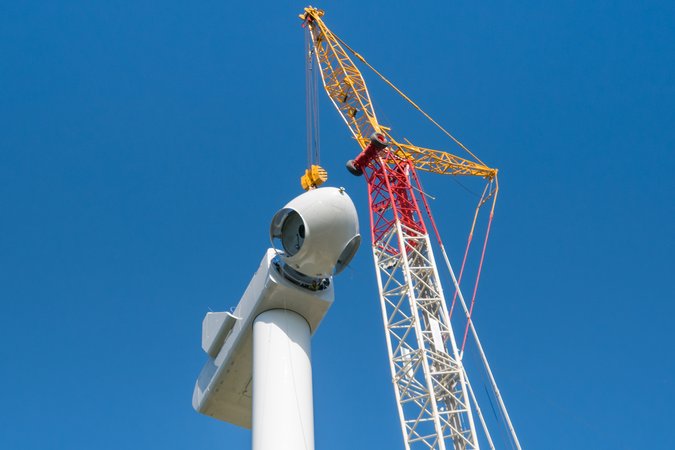Defining the Financial Benefits of Renewable Facilities Placed in Connection with Low-Income Communities
To the Department of the Treasury on the Energy Credit Increase for renewable facilities connected to low-income communities.
Introduction
Section 48E(h) of the Inflation Reduction Act provides for bonus credits for solar and wind facilities that are built to serve low-income communities. In its request for comment the Department of Treasury asks if there is guidance needed to clarify the meaning of “financial benefit” and if there are financial benefits beyond the reduction in electricity rates for “occupants of low-income residential building projects and low-income benefit projects.” In this comment we address these questions specifically and other associated issues that they raise.
Memo
The definitions of “low-income” and the eligible technologies are clearly defined in the bill, but the "financial benefits” to be quantified are not clearly defined. Below, we discuss several important considerations for defining financial benefits in the context of an energy investment project. In addition, we highlight considerations that may help to identify projects that are most efficient in their delivery of benefits to low-income households, in light of the capacity cap on this particular bonus credit. Finally, we discuss the eligibility of community solar projects for this particular tax credit, and how certain provisions may help encourage these types of projects.
Definition of “financial benefit”
Investments in distributed generation in low-income communities offer a variety of benefits, with a variety of financial implications. Guidance is needed to clarify the term “financial benefit.” The term may be understood to encompass savings on electricity bills for affected households. However, financial benefit from any investment introduces pecuniary benefits for all grid-connected customers. This occurs even when households invest in behind the meter measures because it reduces demand on the grid and places downward pressure on electricity prices.
In the long run, behind the meter investments could shrink the customer base, leaving greater costs on remaining captive customers who in many circumstances may be low-income households and communities. Priority for projects in low-income households and communities may be appropriately sorted based on the likelihood that other projects may result in cost shifting onto those groups.
Financial benefits can accrue from many forms of investment by improving electricity reliability and resiliency, which may accrue primarily but not entirely to the location where the investment occurs. Nonpecuniary benefits may have a financial implication by avoiding economic losses associated with disruption of the electricity grid. Perhaps most importantly, investments in electricity infrastructure in low-income communities may ignite economic development and create jobs that provide financial and other benefits widely across the community. Guidelines should address how these various types of benefits are included in the evaluation of eligibility.
Standards for forward-looking projections
A concern of investors and households in low-income communities is the certainty of the tax credit, as well as how it can be monetized. An investment tax credit may be associated with a project that ultimately fails to deliver anticipated financial benefits. Guidelines should clarify whether and how the investment tax credit is vulnerable to performance of the project over the project lifetime.
Applicants may need to provide evidence of financial benefit ex ante to qualify for an investment tax credit. This requirement would necessitate formal criteria for determining financial benefit. If the financial benefit is defined as lower electricity rates, the guidelines may need to address how electricity rates paid in the absence of the project investment for low-income households are calculated. The criteria should also clarify for how many years in the future do projects have to demonstrate benefits. A distinction between rates and bills should be clarified because a reduction in electricity rates could lead to increased consumption yielding nonpecuniary benefits especially where energy poverty has been evident previously.
Defining “below-market” rates
While lower rates obviously offer financial benefit, rates may not be straightforward to compare. For example, a local utility may offer seasonal fixed electricity rates, and the new project may offer a different billing structure, for example, time of use rates that vary throughout the course of the day in a predictable way. To measure financial benefit, the applicant may need to estimate how electricity demand might interact with these changes in pricing structures to estimate overall savings for households. There may also be additional compensation schemes outside of rates, like for demand response programs1, that need to be considered.
Identifying more efficient projects
Because there is an annual capacity cap on the total number of projects (expressed in terms of MW) that can receive the credit, it would be prudent to articulate additional requirements that would help identify the selection or award of the credit if the credit is oversubscribed. As stated, the statutory criteria for awarding the bonus credit does not suggest a minimum benefit that is required to be delivered to low-income communities, only that 50 percent of the total benefits must be delivered to them. A useful guideline may be to identify and prioritize projects that offer a greater magnitude of benefits to low-income communities as a share of the overall investment.
There is a trade-off to making stricter or looser definitions of ‘financial benefit.’ Stricter requirements for the sake of guaranteeing more household financial benefit will reduce the number of potential projects that qualify. However, a looser definition of financial benefits can lead to projects that are inefficient or less beneficial to households for the sake of allowing more households or developers to seek this credit. A description of a process for evaluating overall project impacts including all types of benefits could allow for a system like competitive grants.
Identifying beneficiaries
If projections of benefits from the additional tax credit bonuses are forward looking, what responsibility do the entities have to accurately identify beneficiaries? Simply operating in a community with a 50 percent low-income population may over or underestimate the degree to which the project will benefit low-income households. Treasury could seek (1) evidence about which households will participate or benefit beyond where they are located and (2) evidence about whether households will be able to access electricity cost savings. For example, if utilities are included in rent, then the landlord will be the beneficiary of lower rates, at least in the near term. An additional consideration may be (3) how much electricity participants will purchase to determine the magnitude of their savings. On average, households in higher income brackets consume more electricity, so if the benefits are not weighted by household electricity demand, it is likely that less than 50 percent of the financial benefit will go to low-income households, even if 50 percent of the beneficiaries are low-income.
Eligibility of community-scale investments in energy resilience for buildings in low-income communities
Opportunities to harvest reliable electricity from solar installations and solar plus batteries on the rooftop of an individual single or multi-family building are often impractical. Moreover, economic development and energy reliability in low-income communities may be most effective on a community scale. Greater efficiency and cost effectiveness of investments often may be achieved at the community level. Hence, community-scale projects (such as community solar) should be encouraged in guidelines for facilities placed in service in connection with low-income communities. The term “in connection with” should be clarified, and eligibility of community-scale efforts should be accommodated in the guidelines. In general, guidelines are needed to clarify and simplify eligibility, and the process for applying for tax credits and bonuses in low-income communities, especially when community-scale projects are the most practical way for low-income households and communities to advance clean energy.
These guidelines need to address the value of tax credits for households in low-income communities. Low-income households or developers in low-income communities may not have a tax obligation equal to the value of the credit. Potential solutions include bankability of credits over years, and transferability of credits among households or firms involved in a development project.
Clarity and certainty of eligibility and the process for monetizing the tax credits is likely to be crucial to unlocking the opportunity for engagement in low-income communities. Direct outreach to communities including education through community-based organizations, municipal governments, and other organizations would increase the uptake of credits and participation of affected communities. Assistance in identifying project opportunities, assisting in determination of eligibility, and assistance in completing submittal of claims for credits is likely to accelerate the investment in low-income communities. Funding for outreach activities by community partners would be likely to contribute to the program’s success.








